Part of a series of articles titled Park Paleontology News - Vol. 15, No. 1, Spring 2023.
Article
One Hundred Years of Bryce Canyon–Over Fifty Million Years of Fossils

Tut Tran, ACE Epic Paleontologist Fellow
Bryce Canyon National Park, Utah
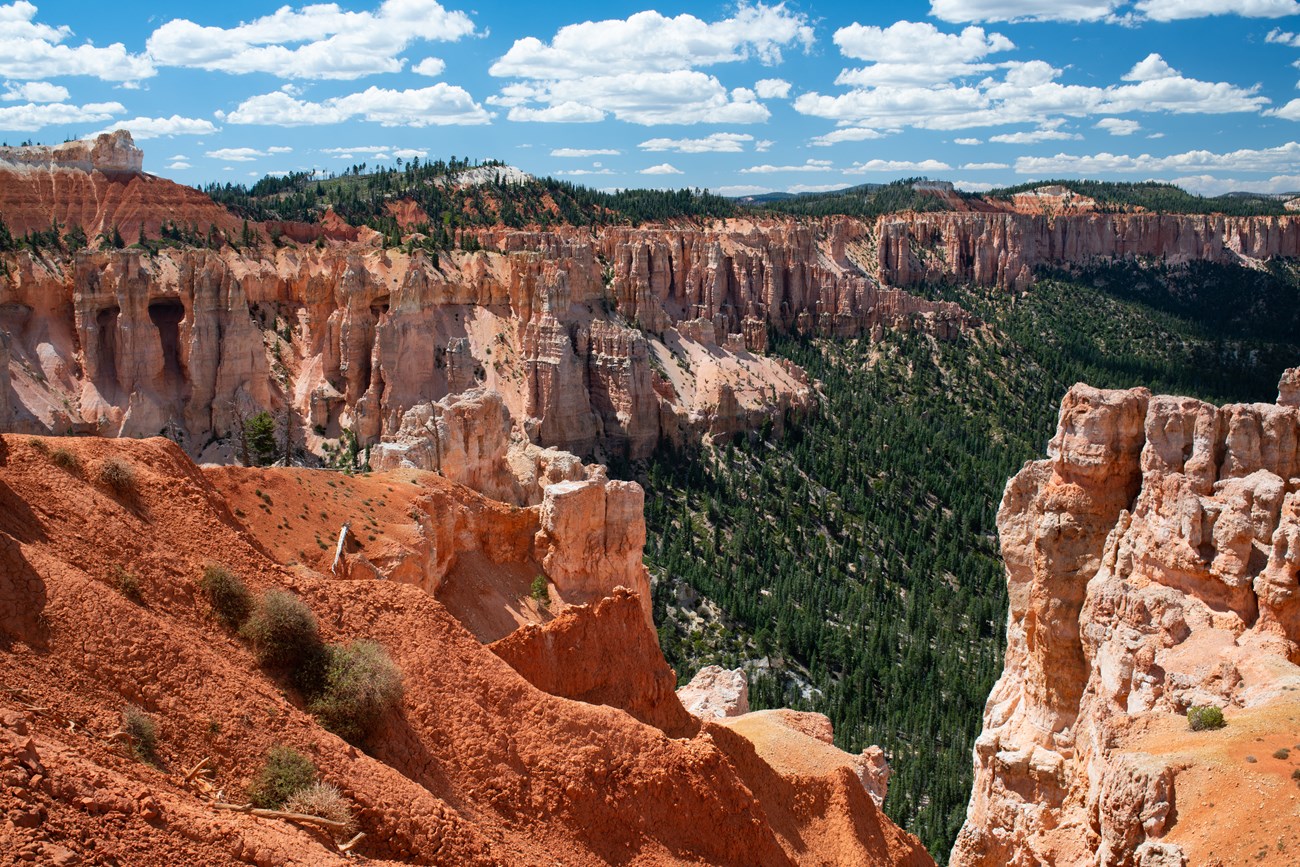
NPS photo by Peter Densmore.
Introduction
Happy 100th birthday to Bryce Canyon National Park! In the century since its inception as Bryce Canyon National Monument, over 61 million people have travelled from all over to marvel at its spectacular pink vistas of Eocene-aged hoodoos and pristine wilderness. However, few fully grasp the total extent of the park’s geological marvels. In fact, much of southern Utah, where Bryce Canyon (BRCA) is situated, possesses fantastic geology that preserves a nearly uninterrupted record of environmental changes spanning the Late Cretaceous Epoch (100-66 million years ago) and continuing into the early Cenozoic (66-34 million years ago). An excellent example of this is contained in Grand Staircase-Escalante National Monument (GSENM), which boasts many fossils ranging from deep marine ammonites to petrified logs. GSENM has most famously been the source of abundant and diverse Cretaceous dinosaurs including many new taxa. BRCA sits just west of GSENM and shares much of its geology. Despite this proximity, shared geology, and being in the National Parks system for a century, BRCA has never been known as a fossil-bearing park. However, the park does have a known paleontological record and has the potential to produce abundant fossils as a result of scientific studies in the future.
1988—2013: A History of Paleontology at Bryce
For most of BRCA’s history, paleontology has remained obscure from the public eye, and just consisted of a small handful of fossils collected by visitors occasionally over many decades. However, paleontological research in the park increased over a span of three decades thanks to the dedication of scientists.
This work, spearheaded by Dr. Jeffrey Eaton, Professor Emeritus of Geosciences at Weber State University, forms the richest period of rigorous paleontological study here. From 1988 to 2013, he and several cohorts of students surveyed much of the park’s rugged terrain. In that time, they found over 170 sites across all fossil-producing rock formations (including the hoodoo-forming Eocene Claron Formation, the mostly terrestrial Cretaceous Wahweap and Straight Cliffs Formations, and the deep marine Cretaceous Tropic Shale), finding fossil vertebrates including fish, sharks, frogs, turtles, crocodilians, mammals, and even some dinosaurs. They also encountered many plant, and, importantly, invertebrate (snails and clams, primarily) and trace fossils (remnants of animal behavior, like feeding traces and burrows) across all rock units.
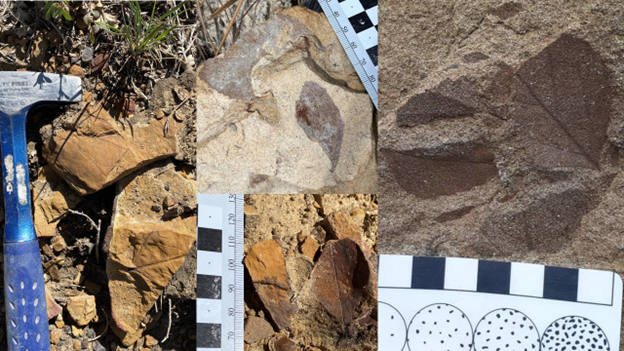
NPS Photo.
Their research focused primarily on the diverse and highly informative Cretaceous microfossils in the park, usually teeth of mammals and reptiles. The advantage of studying these fossils, as opposed to the remains of large animals like dinosaurs, is that it is comparatively easy to collect and study a very large sample of diverse and (with the help of screen-washing rock samples and study of recovered specimens under a microscope) identifiable specimens. This provides a much more detailed representation of a given ancient ecosystem than even a handful of dinosaurs can, allowing paleontologists to better discern large-scale patterns in geologic time and space. For example, Dr. Eaton compared the micromammals recovered from BRCA’s Cretaceous rocks to those of the same age found in Grand Staircase-Escalante Monument. He found that, despite overlapping in time, BRCA and GSENM possess distinct groups of mammals and have few species in common. This supports the idea that there were environmental differences across the Cretaceous landscape in this part of southern Utah (Eaton, 2013).
Not the least of Dr. Eaton’s work at BRCA is the discovery of four holotype specimens. A holotype is the single fossil that paleontologists use to define a new species, and all future similar discoveries are compared against it. The four holotypes collected by Dr. Eaton represent the multituberculate (rodent-like) mammal Dakotamys shakespeari (Eaton, 2013), the skink-like lizard Monocnemodon syphakos (Nydham, 2013), and two sawfishes, Columbisia deblieuxi and Texatrygon brycensis (Kirkland et al., 2013). Although he is retired, Dr. Eaton still works on fossils from inside and around BRCA to this day, having shifted his focus from Cretaceous microfossils to the Paleocene–Eocene floodplain environments represented by the invertebrates (snails, clams, charophytes, and ostracods), plants, trace fossils, and microvertebrates recovered from the hoodoo-forming Claron Formation—the famous orange-pink rocks of Bryce Canyon National Park.
Despite this prolific research, the park saw a nearly ten-year hiatus in paleontological work after Dr. Eaton’s last survey in 2013. A major exception to this was triggered by construction activities along SR12 just a few years ago, resulting in emergency salvage of fossils by Dr. Eaton, Utah State Paleontologist Dr. James Kirkland, and paleontological monitors from Steven W. Carothers & Associates, Inc., an environmental consulting firm tasked with preventing the destruction of fossils during construction projects. This incident highlighted to our Resource Management Division and Superintendent that the park has important fossil resources that require an active paleontology management program.
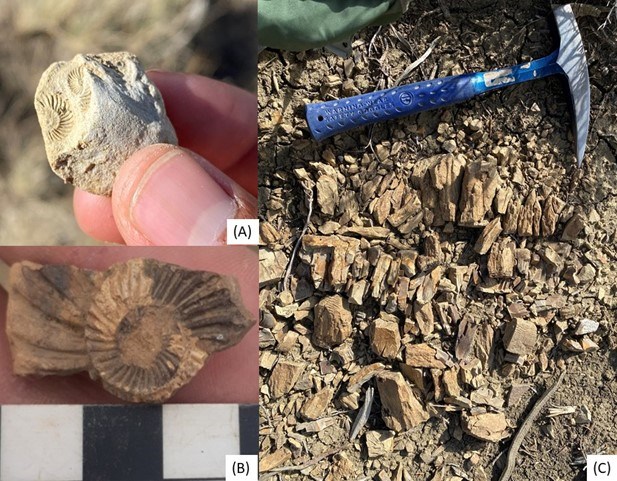
NPS Photo.
2022: A New Beginning
The lessons learned from the recent construction incident spurred enthusiastic action from our Superintendent and Resource Management Division, which made great strides toward protecting fossils by creating BRCA’s first internal paleontology team. In June 2022, staff (me, a Physical Science Technician at the time) and a Scientists-in-the-Parks intern (Dakota Pittinger) began the first stages of building a new paleontological resource management plan. Our task was to update the baseline for BRCA’s known fossils by relocating and assessing the status of Dr. Eaton’s previously discovered localities. If we happened to encounter new fossil sites along the way, we would record them as well.
The rate and sheer abundance of new discoveries rapidly exceeded our expectations. At the start of the season, we were stumbling upon up to three new sites each day we went into the field. The fossils that we were encountering are consistent with Dr. Eaton’s discoveries (snails, trace fossils, plants, turtles, crocodilians, and dinosaurs). However, the fact that we kept turning up so many brand-new sites—59 by the end of the field season in November, out of the 105 total documented—is exciting and reaffirms BRCA’s potential as a source of significant fossils.
Some of the most exciting finds this season include:
-
Several beautifully preserved fossil leaf and petrified wood sites (Figure 1),
-
A fossil wasp/bee burrow network,
-
Sites replete with freshwater and marine snails, oysters, and even ammonites (Figure 2),
-
Multiple instances of large crocodilian fossils,
-
A partial juvenile hadrosaur tail (Figures 3 and 4),
-
And, especially exciting, is the first instance of dinosaur footprints ever recorded in Bryce Canyon’s 100-year history (Figure 5)!
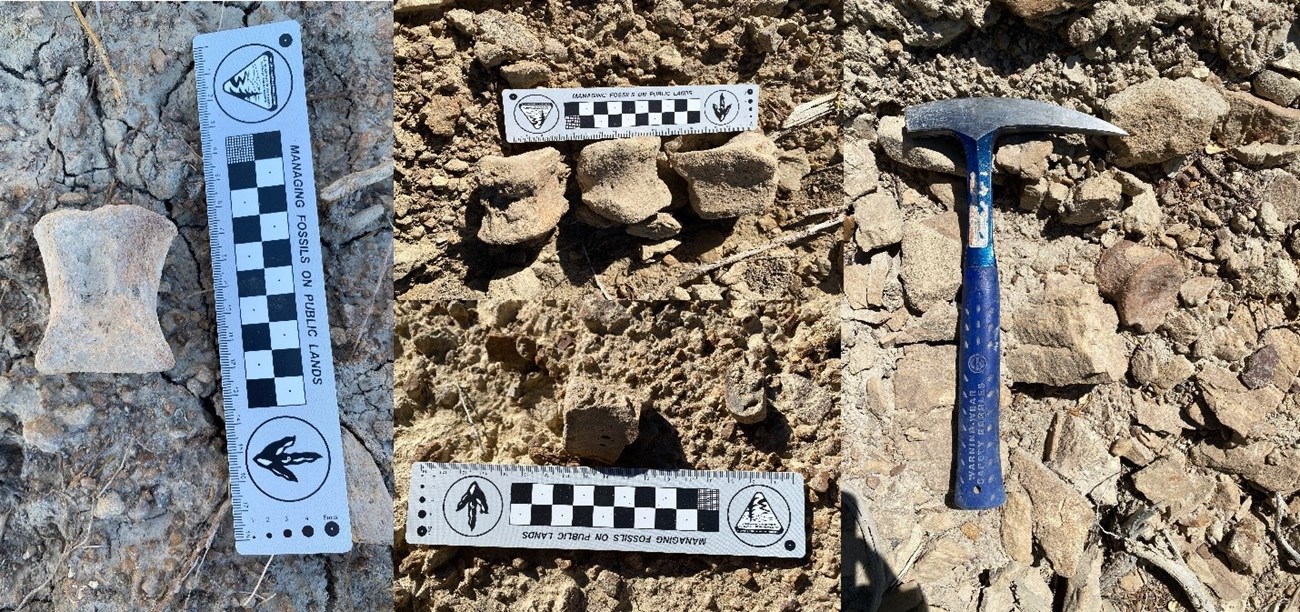
Figure 3. Several juvenile hadrosaur tail vertebrae found on the surface of a single site. These are diagnosable as belonging to a juvenile animal due to the presence of unfused and unbroken sutures (most visible in the bottom middle), which in adults are fused to the neural spines of the vertebrae. All vertebrae encountered at this site, of which there were several, showed this juvenile feature. The fact that they were concentrated in a small area along with other hadrosaur bones (isolated skull and limb pieces) suggests that there may be more of the animal still in the ground. Scale bars in centimeters.
NPS Photo.
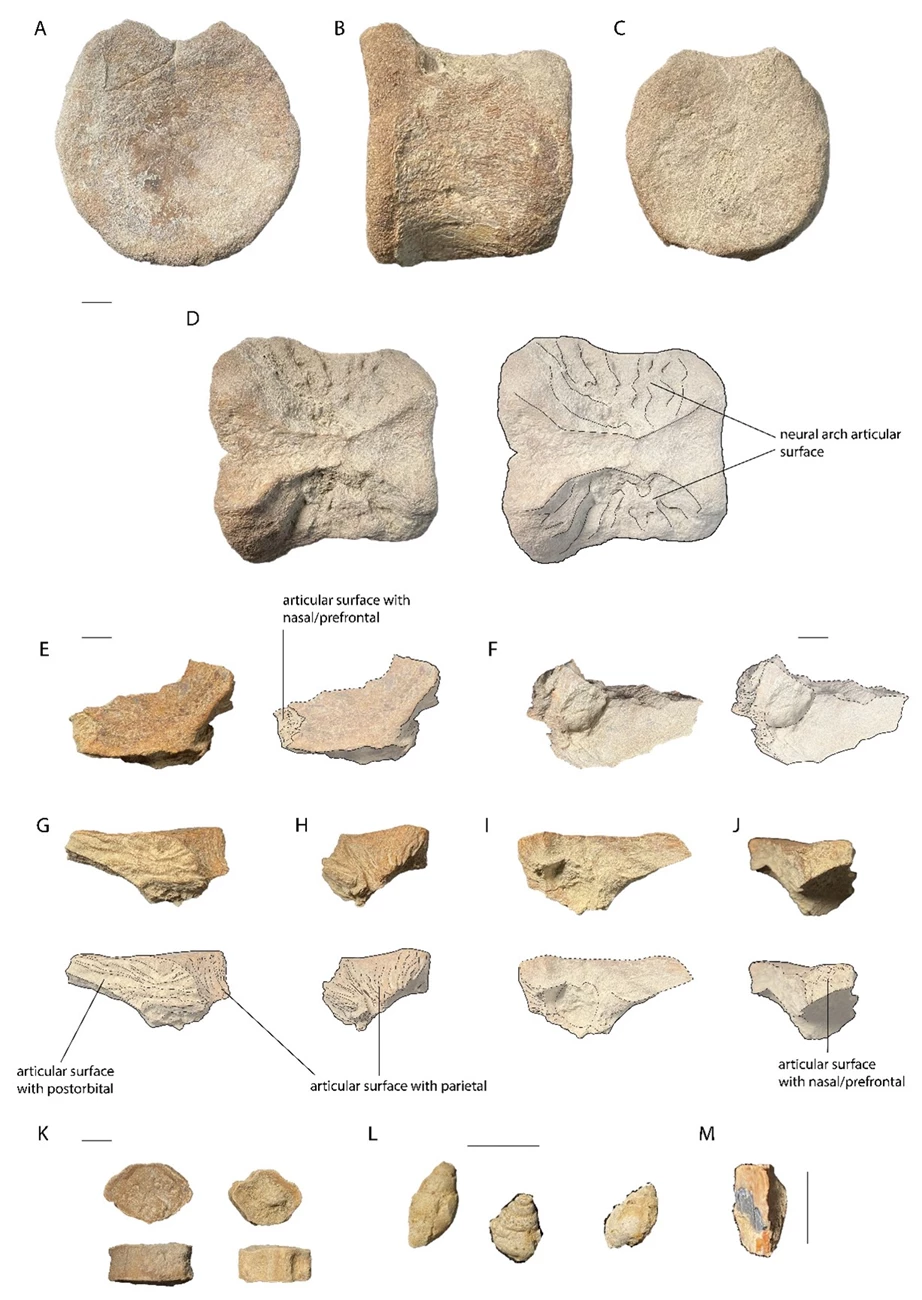
Figure 4. Closeups of important fossils from the juvenile hadrosaur tail site. These include a juvenile hadrosaur tail vertebra (A—D), a partial juvenile hadrosaur frontal (skull) bone (E—J), and additional microfossils: bowfin fish vertebrae (K), snails (L), and a hadrosaur tooth (M). The unfused sutures characteristic of juvenile animals are labeled for the vertebra and the frontal bone. All scale bars equal one centimeter.
NPS Photo.
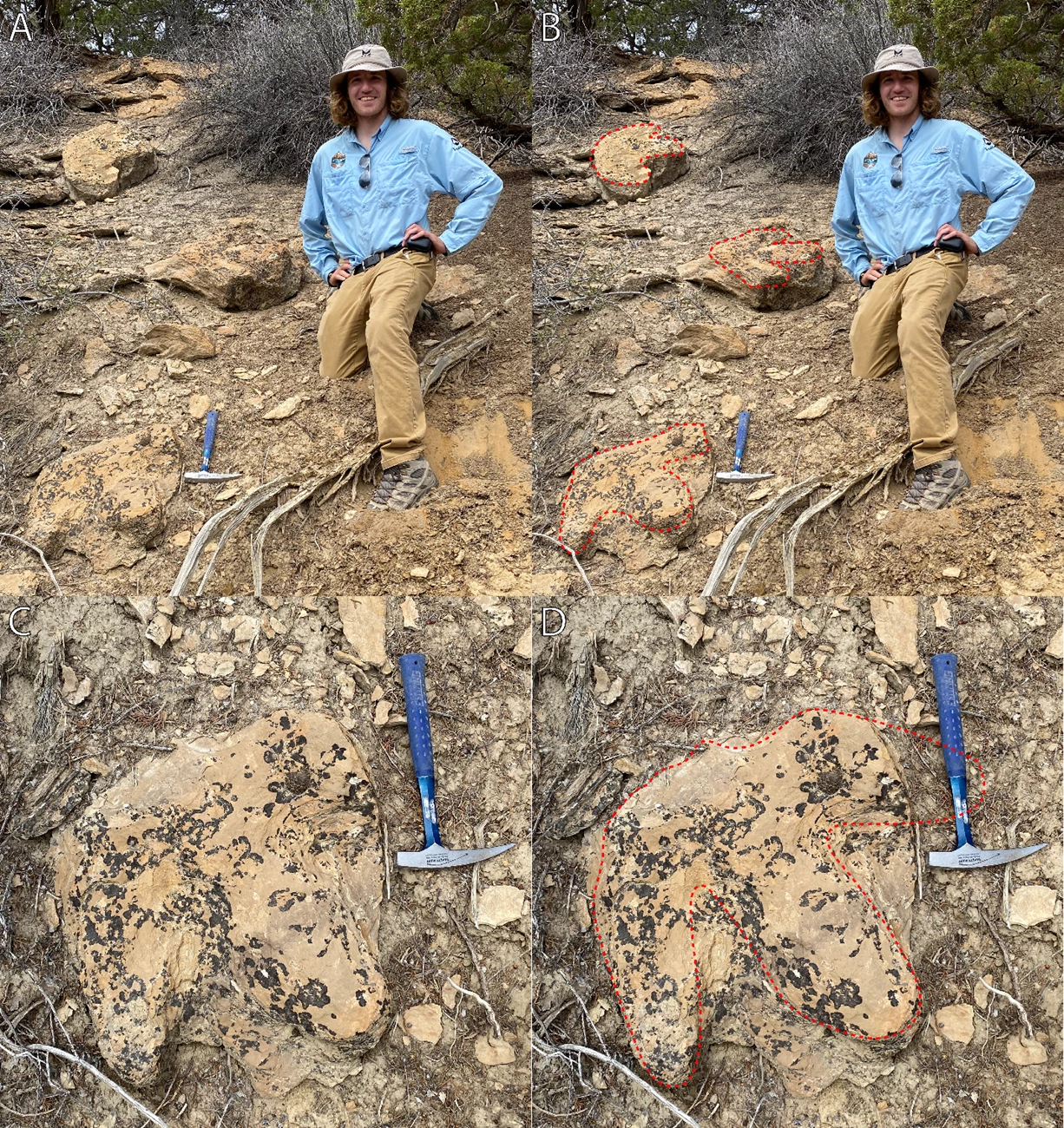
Figure 5. The first recorded instance of dinosaur footprints in Bryce Canyon National Park, Dakota Pittinger and rock hammer for scale. Outlines as visual aid in B and D. These footprints are sandstone casts, as opposed to being negative-relief impressions in rock. Though the hadrosaur that made these tracks likely walked on soft mud, these are preserved as sandstone casts because sand later buried and infilled the original muddy footprints. This is common for hadrosaur footprints in this part of southern Utah.
NPS Photo.
The wealth of knowledge and diversity represented in the fossils discovered this season is thrilling and supports the suggestion that BRCA is and should be recognized as a park with important fossil resources. We have begun to develop our knowledge of the park’s fossil abundance, but we need to do more than simply know there are fossils in the park. As we look to the future, BRCA staff will need to figure out ways to best manage and protect these non-renewable resources from threats like erosion and, hopefully less frequently, disturbance by humans. Questions like how we will safeguard the park’s fossils, either by collecting them or leaving them in place, need to be resolved prior to the imminent 2023 field season.
2023—2028: A Time for Celebrations and Preparations
The close of last year’s field season and the prospect of the coming field season marks an excellent moment to commemorate BRCA’s paleontological past and look toward to securing its future. This year is the first of two centennial celebrations: Bryce Canyon National Monument was established in 1923 and later designated as a National Park in 1928. This window of time presents opportunities for research and education, as well as logistical challenges, especially because we are still in the early stages of developing the fossil resources of the park.
The original survey and that initiated in 2022 will need to continue to improve our knowledge for the total extent of fossils in the park—although exciting, last year’s survey was only a starting point. We can also begin implementing site-specific measures. For example, the previously mentioned dinosaur tracks are too big to collect for study in a lab, so digitizing them with photogrammetry is probably the best approach for preservation and protection. With continued discovery comes the responsibility of managing and protecting specimens and the information they contain. To this end, we are exploring avenues to safeguard the park’s fossils with the help of our law enforcement rangers, educating the public with our interpretive staff, gaining outside expertise from paleontologists like Dr. Eaton and Dr. Kirkland, and, crucially, securing storage space for BRCA’s most scientifically important fossils with our colleagues at Zion National Park (ZION) and other museums like the Natural History Museum of Utah, where all of Dr. Eaton’s discoveries have been stored. The last point is particularly important because ZION serves as the museum repository for four parks and monuments in total: ZION, BRCA, Cedar Breaks National Monument, and Pipe Spring National Monument. This understandably has led to limited space for storage of future discoveries, including fossils. The issue isn’t exclusive to the BRCA repository, but is shared across many museums, so it’s important that we work together toward solutions in the coming years.
In the meantime, most of BRCA’s fossils are safest where they’ve been for eons: in the ground and away from humans, park staff and visitors alike. That won’t stop us from striving to find and protect the ones exposed on the surface now—it’s our responsibility. We’re very excited to share these finds with the public now that protection and educational programs are being developed. Cheers to the previous hundred years (or should I say ~50 million years?) of Bryce Canyon National Park behind us, and cheers to the next hundred more years of exploration of BRCA paleontology!
References
-
Antonietto, L.S., Eaton, J.G., and Park Boush, L.E. 2022. A newly found ostracod fauna from the Paleocene?—Eocene Claron Formation at Sweetwater Creek, Utah, USA with description of a new species. Micropaleontology 68(4):375–388.
-
Eaton, J.G. 2004–2013. unpublished field notes.
-
Eaton, J.G. 2013. Late Cretaceous mammals from Bryce Canyon National Park and vicinity, Paunsaugunt Plateau, southwestern Utah. In Titus, A.L., and Loewen, M.A. eds. At the Top of the Grand Staircase: The Late Cretaceous of Southern Utah, Indiana University Press, p. 329–369.
-
Eaton, J.G., Korth, W.W., and Brinkman, D.B. 2018. Vertebrate fossils from the Claron Formation, Sweetwater Creek area, Garfield County, Utah, U.S.A. Rocky Mountain Geology 53(2):113–127.
-
Kirkland, J.I., Eaton, J.G., and Brinkman, D.B. 2013. Elasmobranchs from Upper Cretaceous freshwater facies in southern Utah. In Titus, A.L., and Loewen, M.A., eds. At the Top of the Grand Staircase: The Late Cretaceous of Southern Utah, Indiana University Press, p. 153–194.
-
Nydam, R.L. 2013. Lizards and snakes from the Cenomanian through Campanian of southern Utah: filling the gap in the fossil record of Squamata from the Late Cretaceous of the Western Interior of North America. In Titus, A.L., and Loewen, M.A., eds. At the Top of the Grand Staircase: The Late Cretaceous of Southern Utah, Indiana University Press, p. 370–423.
-
Sanjuan, J. and Eaton, J.G. 2016. Charophyte flora from the Claron Formation (Aquarius Plateau, southwestern Utah): biostratigraphic implications. Micropaleontology 62(4):323–330.
Related Links
-
Bryce Canyon National Park, Utah—[Geodiversity Atlas] [Park Home] [npshistory.com]
Last updated: March 24, 2023
